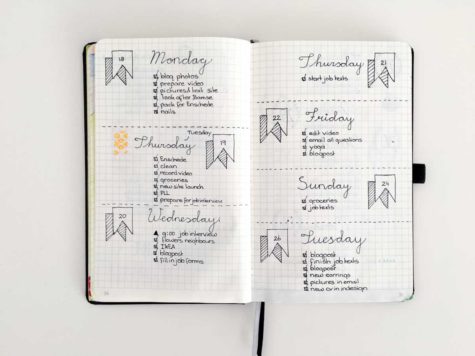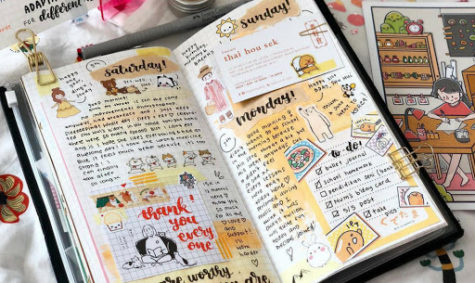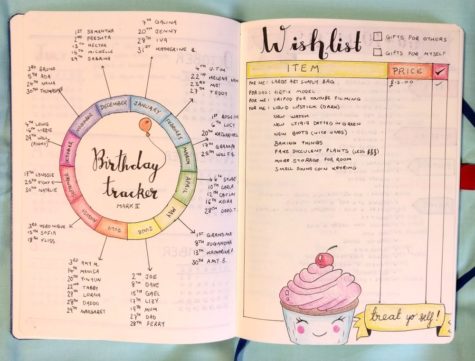Best way to plan your life out and stay organized: bullet journal or planner?
May 10, 2019
I grew up not sure of how to manage the abundance of time I had when I was younger. By younger, I mean any age before thirteen. See, the amount of homework and the small extent of extracurricular stress before high school is nowhere close to the increased level after the start of high school. Freshmen year is when a crazy shortage of time and the choosing of one passion over another begins. I’m now currently a junior, and the responsibilities have only grown.
It was because of my crucial need for controlling responsibilities during high school that I began using a planner. However, it didn’t work for me. Not knowing what to do was extremely overwhelming, so I tried to find another way to organize myself and I did: a bullet journal.
With bullet journals newly risen popularity, many people do have begun to question what it is. A bullet journal is a small notebook that’s about 5” by 8.25” and has dotted paper. There’s usually no set up for days or months and at the very most it has an index. Everything is left up for the individual to plan.
The index might be given, but it’d have to get filled in. Any weekly setups or month spreads have to get drawn or written in. Also if desired, a birthday or wishlist page can be up for the making.



Furthermore, bullet journals attract a lot of people that love calligraphy and doodling. It’s an easy outlet for those who have many artistic interests but don’t want to carry around multiple journals.
It’s essential to find what works for you before you become a contributor to your stress. Everyone has the ability to make a change in their life, so try to start now if it’s needed. It’s never too late and especially, never too early.
SHS Guidance Counselor Rick Nowak has thoughts on how the urgency of better time management skills can help maintain healthy lives.
“I really believe a lot of kids are starting to get unhealthy lifestyles,” Nowak said. “If you stayed a little bit more on task with time management skills, it would help cause less stress and anxiety with kids.”
Now, how exactly can you stay on task? Plan the things you have to do. Laundry, cleaning, homework, work, clubs, sports and extra responsibilities all can be written down on paper (or your phone).
It’s common sense that everyone should be educated on the effectiveness and usage of primary task managing strategies before the stress gets to one’s head.
It can all be implemented in either a planner or a bullet journal, whether it’s digital or tangible.
For those who are unorganized, you’d think the planner works best. Praditha Behara, an SHS sophomore, believes it’s more about the personality type and if you think creatively.
“Bullet journaling looks really cool but it takes a lot of time [and] I don’t have the creative ability or the patience to make all of the time,” Behara said.
I’d have to agree with Behara, but her points are exactly why it works for me. Hilal Balik, another SHS sophomore, thinks likewise but unlike Behara, she too uses a bullet journal.
“It offers me flexibility and is a way for me to channel creative energy rather than just academics,” Balik said.
On the other hand, since a planner has every day and week already written, it’s easier to write down future tasks or even give yourself future advice.
“Sometimes to make myself hype when I’m sad or something, I put things that make me happy in later months and write notes for myself,” Behara said.
This is an advantage because it takes time for someone with a bullet journal to do.
A disadvantage for planners though is that any extra page is crammed in because there are not many blank pages. Balik is able to have pages such as ‘What makes me happy’ and ‘Things to do when I’m bored’ and go back to them easily.
Overall, the main aspect of finding a way to organize oneself has to be prioritized is individualization. Everyone can find their strategy to work with the time they have and the extent of their creative outlet.
“I think the more creative and the more you personalize it to yourself, the more you feel better about it,” Nowak said. “You’ll be tending to want to do it more and continue doing it.”

